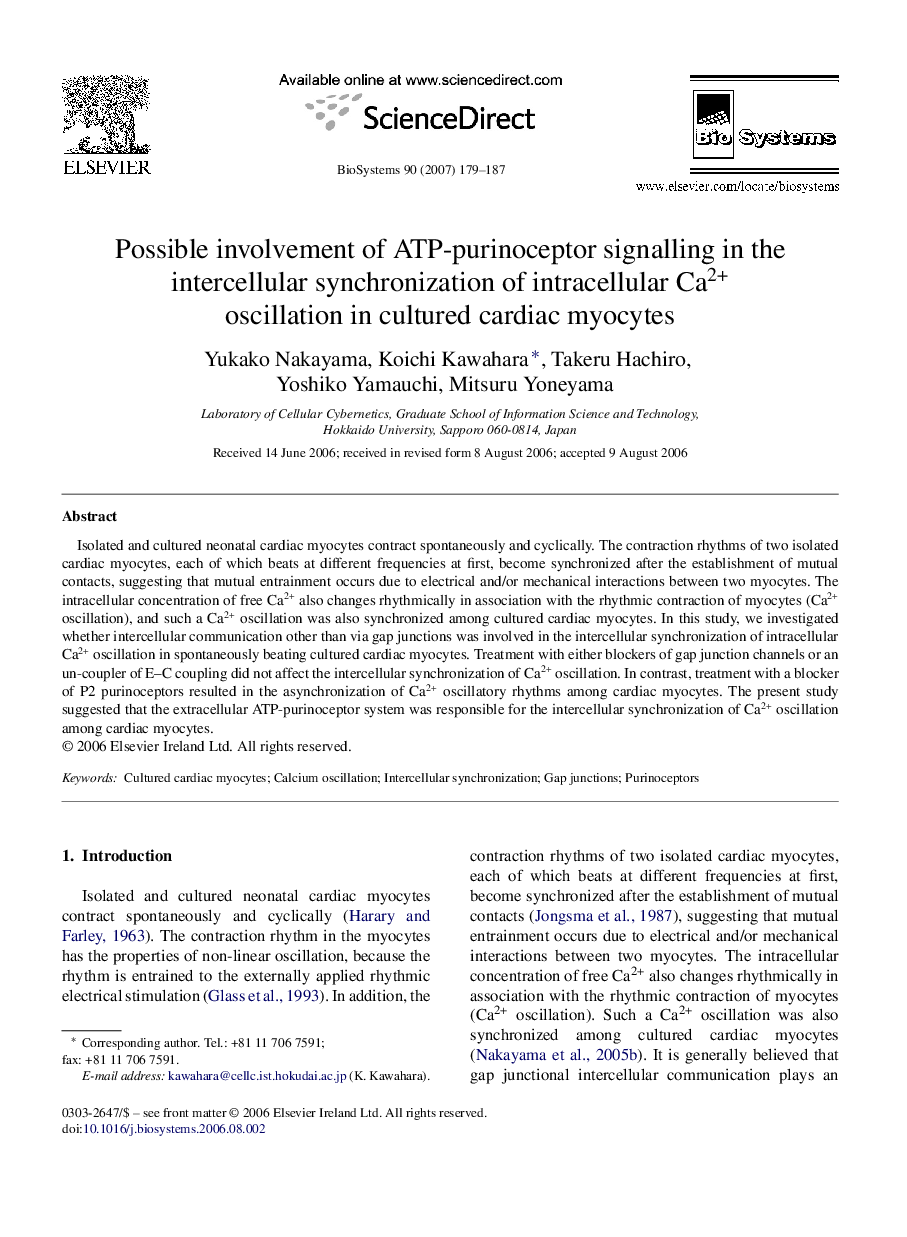| Article ID | Journal | Published Year | Pages | File Type |
|---|---|---|---|---|
| 2076829 | Biosystems | 2007 | 9 Pages |
Abstract
Isolated and cultured neonatal cardiac myocytes contract spontaneously and cyclically. The contraction rhythms of two isolated cardiac myocytes, each of which beats at different frequencies at first, become synchronized after the establishment of mutual contacts, suggesting that mutual entrainment occurs due to electrical and/or mechanical interactions between two myocytes. The intracellular concentration of free Ca2+ also changes rhythmically in association with the rhythmic contraction of myocytes (Ca2+ oscillation), and such a Ca2+ oscillation was also synchronized among cultured cardiac myocytes. In this study, we investigated whether intercellular communication other than via gap junctions was involved in the intercellular synchronization of intracellular Ca2+ oscillation in spontaneously beating cultured cardiac myocytes. Treatment with either blockers of gap junction channels or an un-coupler of E-C coupling did not affect the intercellular synchronization of Ca2+ oscillation. In contrast, treatment with a blocker of P2 purinoceptors resulted in the asynchronization of Ca2+ oscillatory rhythms among cardiac myocytes. The present study suggested that the extracellular ATP-purinoceptor system was responsible for the intercellular synchronization of Ca2+ oscillation among cardiac myocytes.
Related Topics
Physical Sciences and Engineering
Mathematics
Modelling and Simulation
Authors
Yukako Nakayama, Koichi Kawahara, Takeru Hachiro, Yoshiko Yamauchi, Mitsuru Yoneyama,
